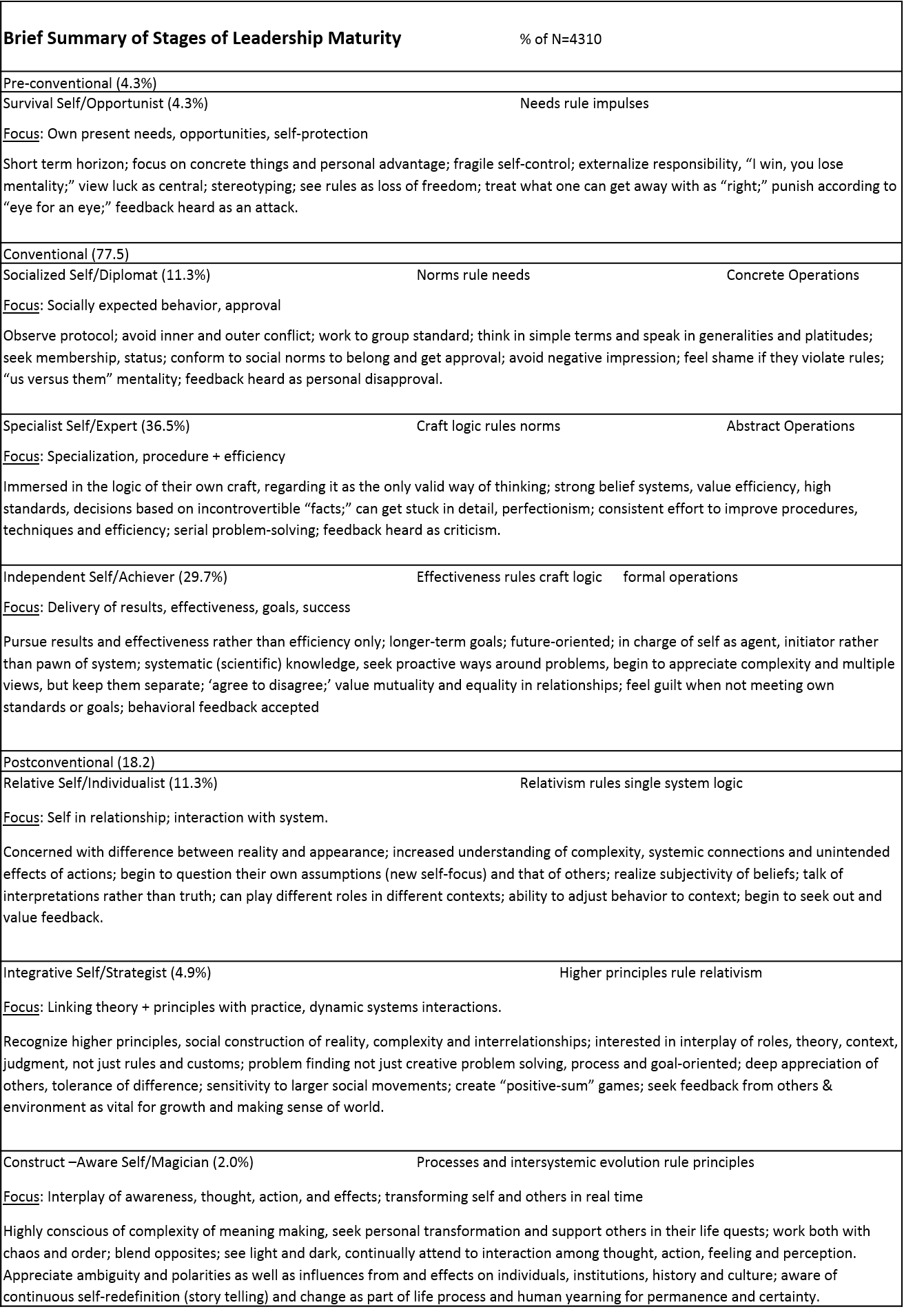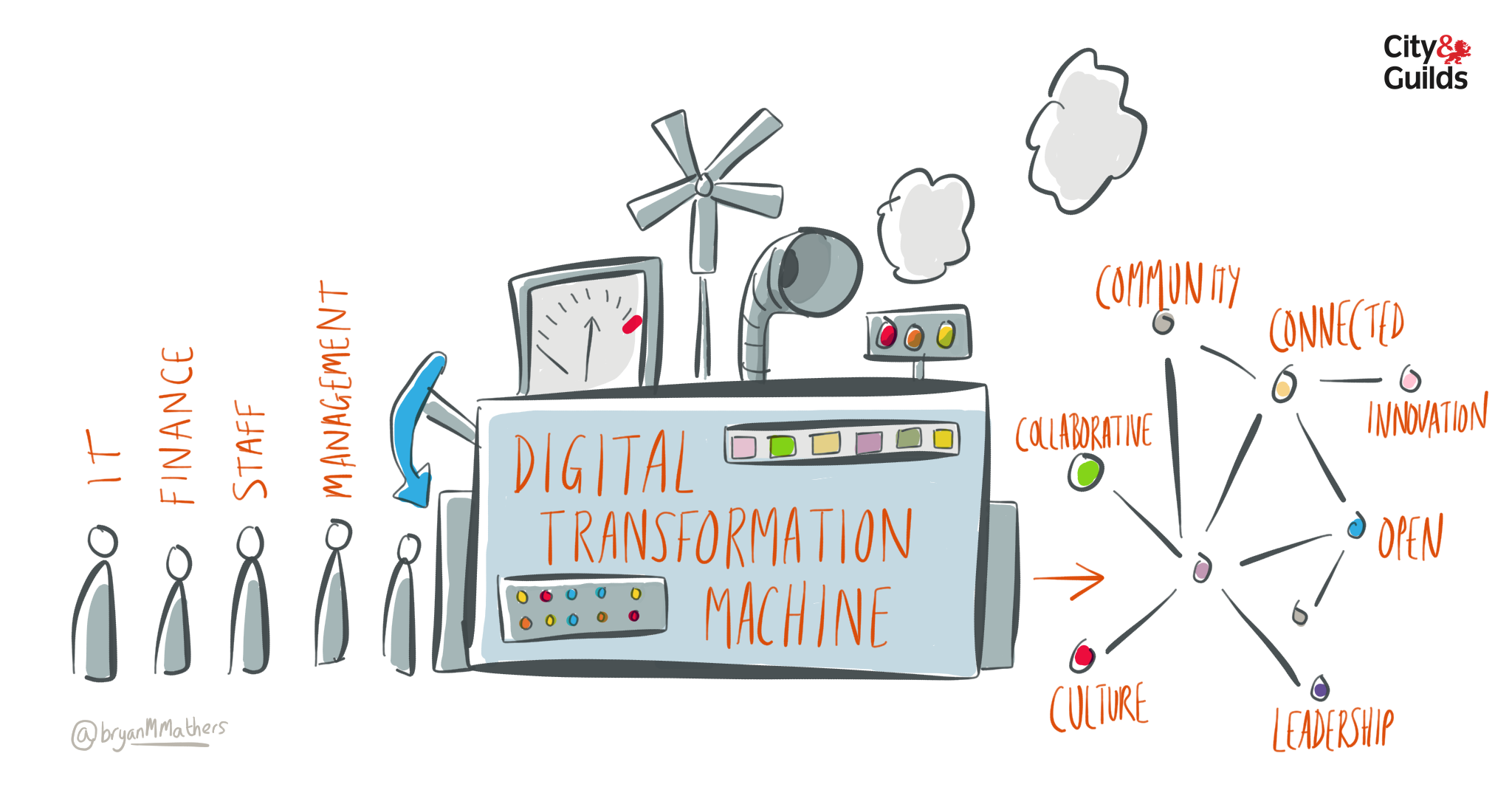Leadership Maturity and Vertical Development
Your level of Leadership Maturity significantly influences your capacity to deal with life and work situations, how you see your role and function in the workplace, how you interact with others, how you solve problems, and how self-aware you are. Leaders develop through various stages of maturity as they grow. Leadership Maturity is about how leaders ‘make meaning’ or sense and interpret experiences at the different stages of development. This is important because the perspectives you use to make sense of the world influence your thoughts and actions. Incorporating the idea of the various stages of your Maturity is critical to innovating your leadership. The author, Jim Collins, referred to Level 5 Leadership in his best-selling business book, Good to Great. Level 5 Leadership is an example of later-stage leadership maturity described in the innovative leadership framework.
One application of the stages of maturity model is to appreciate ‘fit for role’ in organizations. For example, at the ‘Specialist’ level, a leader may perform a process task well and be procedural. A later-stage leader (at the Relative level) who is more mature would be better at handling more complex situations, including those not generally addressed by the rules, and would be better able to take into account the context of the task and adapt when needed.
Another application of this framework is to create a development plan for leaders that is well suited to the level of development they are at, and what would be next for them in their path to maturity.
It is important to note that all stages of maturity bring their strengths and wisdom to an organization, and an optimum mix of levels makes an organization more effective and successful.
Benefits of using this model of Leadership Maturity include:
- Using developmental perspectives guides leaders in determining their personal development goals and action plans. Determining optimum fit for individuals and team members in the context of specific roles in a particular organization
- Identifying high-potential leaders to groom for growth opportunities.
- Determining individual fit for a specific job or role in the recruitment and succession process.
- Supporting change agents in understanding the perspectives and capacities of others at different stages and tailoring solutions that meet the needs and perspectives of all stakeholders.
The Maturity Assessment Profile (MAP) and its conceptual framework, the Leadership Maturity Framework (LMF) assess leadership maturity. This was researched and validated (with criteria at later stages of development) by Susanne Cook-Greuter as part of her doctoral dissertation at Harvard University. This instrument is today’s most rigorously developed, Harvard-tested, unbiased, and reliable perspective measure. The MAP provides unique and personal feedback in addition to stage description and score. The MAP is also the most sophisticated instrument for identifying and measuring later stages of developmentally advanced leadership. The MAP evaluates three primary dimensions to determine developmental perspective: cognitive complexity, emotional capacity, and behavior.
The following table briefly summarizes the levels and the percentage of the sample population at each level using a sample size of 4,310 people. The name of each stage also indicates the old name (previously used terms) in parenthesis. The Center for Leadership Maturity continues to evolve this model and the development tools for its application. The change in the name is evidence of this evolution. Specifically, it is important to note that while we refer to people being “at a level”, people demonstrate perspectives across a range of levels, while evidencing a ‘center of gravity’ at the stage that they generally tend to operate from.
Photo credit: Center for Leadership Maturity




